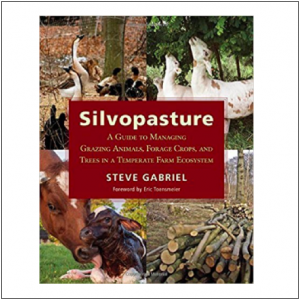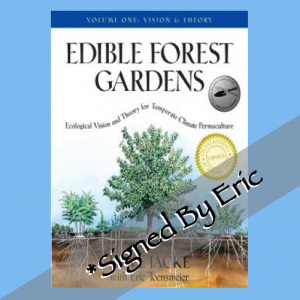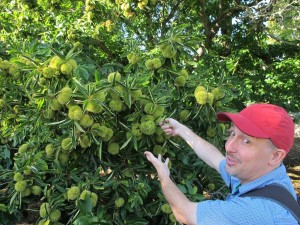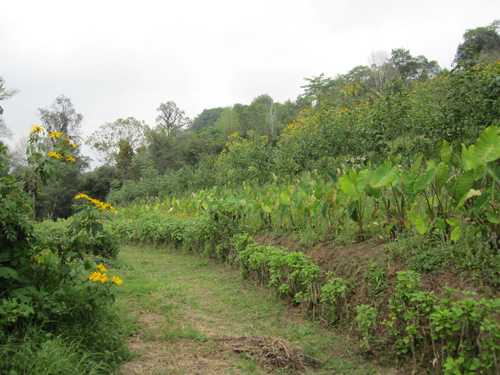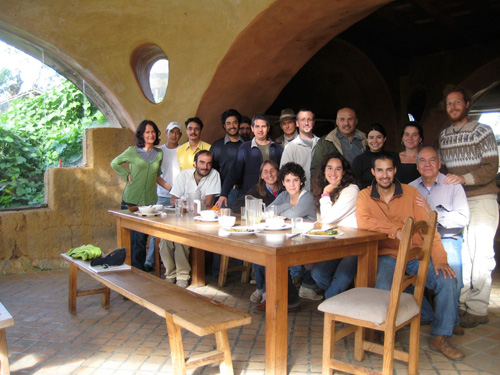
Rafter Ferguson’s recent excellent article “Permaculture for Agroecology” challenges the permaculture movement to read up on whats happening in related fields like agroecology and agroforestry. I’m particularly interested in learning from the well-established agroforestry practices of the tropics to see what might be applied in cold climates. I’ve been learning a lot about what species are used in cold-climate agroforestry as I research the book I’m writing. Here are some species being used on farms for practices like alley cropping, contour hedgerows, living fences, windbreaks, living trellises, and shade for crops. They serve as our alternative to multipurpose tropical trees like Leucaena and Gliricidia.
Many more species could be used for these purposes and undoubtedly are. I’m focusing here on species are are reported in the literature and those that I have personally used or witness to be used for these purposes. My primary sources are Mansfeld’s Encyclopedia of Agricultural and Horticultural Crops, Participatory Agroforestry Development in DPR Korea, and Agro-Ecological Farming Systems in China. Please share your successes, failures, and observations – and set up some formal trials!
Here I’m defining cold climate as boreal (USDA zones 1-3) and cold temperate (USDA zones 4-6), and warm temperate (USDA zones 7-8). These are place with real winters, outside of the subtropics. Arid means 0-250mm of rainfall (1-10″), semi-arid is 250-1000mm (10-40″), and humid 1000+mm (40″ or more). Species market with an asterisk (*) fix nitrogen.
Cold-Climate Superstars
Two species clearly emerge as the most multifunctional (or at least most widely used and written about; many other species are potentially as versatile).
SILK TREE Albizia julibrissin

Silk tree, or mimosa, is a beautiful small tree from E. Asia. It is hardy through USDA Zone 6 through the tropics, and likes semi-arid to humid conditions. Throughout the lowlands and highland tropics, Albizia species are important agroforestry crops. This one is for us! Silk tree fixes nitrogen and resprouts vigorously. It is used in alley cropping and contour hedgerow systems, crop shade, and serves as a windbreak.
FALSE INDIGO Amorpha fruticosa
False indigo is native across North America, though it is mostly ignored here. In China and Korea it is an important agroforestry species. It is hardy to USDA Zone 3 though warm temperate, and handles semi-arid to humid conditions. In fact I have seen it grown in very dry high desert, and deeply flooded floodplains. False indigo is a multistemmed shrub, coppicing readily. It fixes nitrogen, and is used in alley crop, contour hedgerow, and windbreak applications.
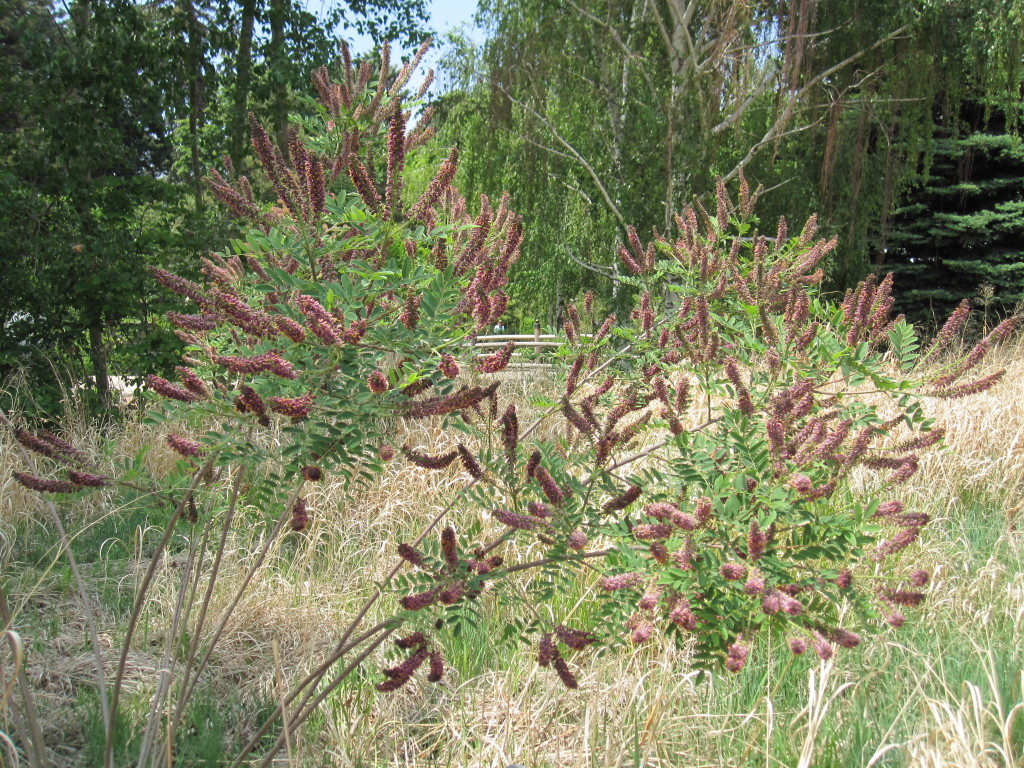
Alley Crop Species
Alley crop systems integrate rows of coppiced woody plants, usually nitrogen-fixers, with wider bands of annual crops. Some crop trees are also intercropped with annuals in alternating rows (like black walnut, pecan, and jujube), but here we are focused on alley crop plants that fix nitrogen to support the neighboring crops.
| Albizia julibrussin* | silk tree | E. Asia | cold temperate to subtropical | humid |
| Amorpha fruticosa* | false indigo | N. America | boreal to warm temperate | semi-arid to humid |
| Hippophae rhamnoides* | seaberry | Eurasia | Boreal to cold temperate | Semi-arid to humid |
| Morus alba | White mulberry | E. Asia | cold temperate through tropical | semi-arid to humid |
Contour Hedgerow Species
Contour hedgerows are essentially alley crops on slopes, planted on contour. They are an excellent erosion control strategy and over time can form living terraces. I suspect Cornus sericea would do a good job at this as well.

| Albizia julibrussin* | silk tree | E. Asia | cold temperate to subtropical | humid |
| Amorpha fruticosa* | false indigo | N. America | boreal to warm temperate | semi-arid to humid |
| Aronia melanocarpa | chokeberry | N. America | boreal to warm temperate | humid |
| Caragana microphylla* | Littleleaf peashrub | E. Asia | boreal to warm temperate | arid to semi-arid |
| Morus alba | White mulberry | E. Asia | cold temperate through tropical | semi-arid to humid |
| Sambucus canadensis | Elderberry | N. America to Mesoamerica | Cold temperate to subtropical | humid |
Living Fence Species
Some of these are come from cuttings like proper tropical living fences, while others are grown from seed.
| Caragana arborescens* | Siberian peashrub | E. Asia | boreal to cold temperate | semi-arid to humid |
| Cylindropuntia spp. | Cholla | Americas | Cold temperate to tropical | Arid to semi-arid |
| Gleditsia triacanthos | honey locust | N. America | boreal to subtropical | Semi-arid to humid |
| Maclura pomifera | Osage orange | N. America | cold to warm temperate | semi-arid to humid |
| Morus alba | White mulberry | E. Asia | cold temperate through tropical | semi-arid to humid |
| Prinsepia utilis | Cherry prinsepia | E. Asia | cold temperate through tropical | semi-arid to humid |
| Prunus spinosa | sloe | Europe | warm and cold temperate | humid |
Windbreak
Cultivated to reduce the impact of wind on crops, livestock, or farm buildings.
| Amorpha fruticosa* | false indigo | N. America | boreal to warm temperate | semi-arid to humid |
| Caragana arborescens* | Siberian peashrub | E. Asia | boreal to cold temperate | semi-arid to humid |
| Caragana microphylla* | littleleaf peashrub | E. Asia | boreal to warm temperate | arid to semi-arid |
| Elaeagnus angustifolia* | Russian olive | Eurasia | boreal to warm temperate | semi-arid |
| Elaeagnus umbellata* | autumn olive | Eurasia | cold to warm temperate | humid |
| Hippophae rhamnoides* | seaberry | Eurasia | Boreal to cold temperate | Semi-arid to humid |
| Populus spp. | hybrid poplar | hybrid | boreal to warm temperate | humid to semi-arid |
| Populus nigra | black poplar | Eurasia, N. Africa | boreal to warm temperate | semi-arid to humid |
| Robinia pseudoacacia* | black locust | N. America | cold to warm temperate | semi-arid to humid |
| Salix purpurea | purple willow | Europe, An. Africa | boreal to warm temperate, humid | humid |
Living Trellis
Cultivated to serve as the trellis on which to grow vine crops. In my own garden I use Albizia julibrussin and Amorpha fruticosa for this purpose.
| Populus spp. | hybrid poplar | hybrid | boreal to warm temperate | humid to semi-arid |
| Populus nigra | black poplar | Eurasia, N. Africa | boreal to warm temperate | semi-arid to humid |
Crop Shade
These crops re intentionally cultivated to provide shade to crops that need it (like ginseng, coffee, etc.)
| Albizia julibrussin* | silk tree | E. Asia | cold temperate to subtropical | humid |
| Alnus cordata* | Italian alder | Europe | cold to warm temperate | humid |
| Styphnolobium japonicum* | Japanese pagoda tree | E. Asia | cold temperate to subtropical | semi-arid to humid |
| Toona sinensis | fragrant spring tree | E. Asia | cold temperate to subtropical | humid |

